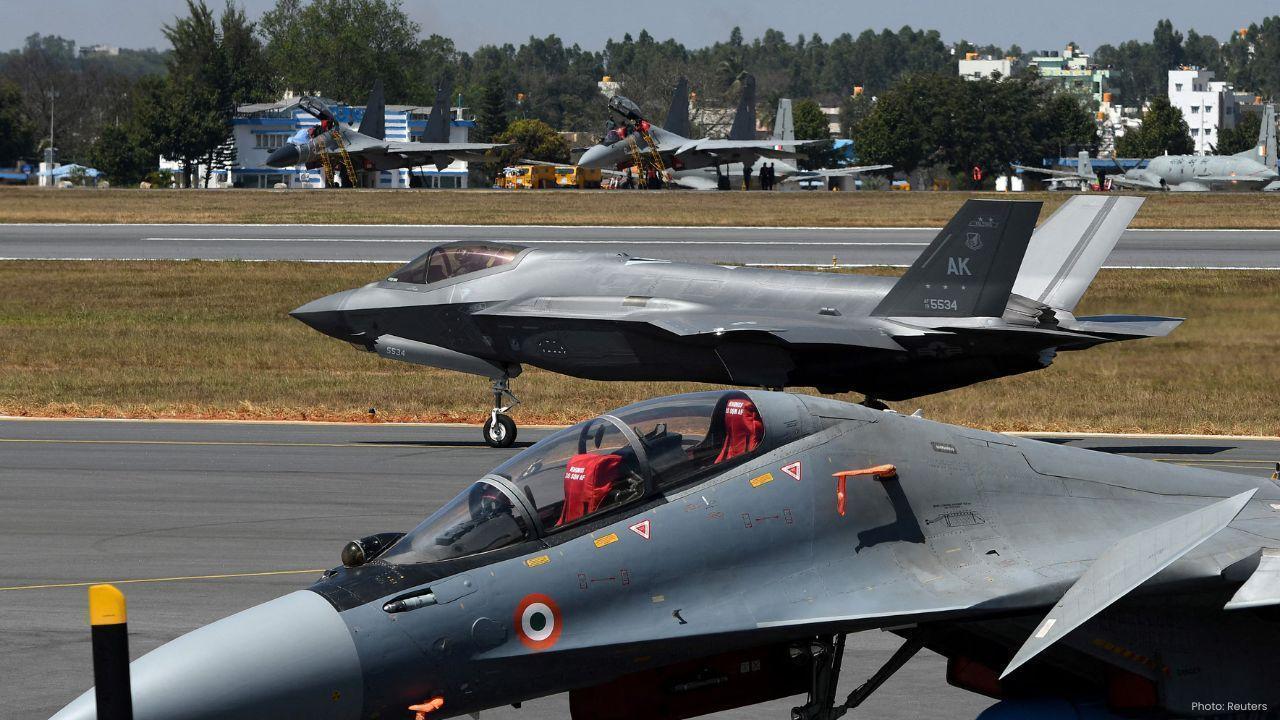
Post by : Meena Rani
In a significant move highlighting India’s growing ambitions in aerospace, Hindustan Aeronautics Limited (HAL) has attracted interest from 28 private firms to partner in developing the country’s first 5th-generation stealth fighter, according to a senior HAL official.
The collaboration is part of the Advanced Medium Combat Aircraft (AMCA) programme, described as one of the most consequential defence projects in India’s history. HAL is now in the process of shortlisting potential partners, aiming to form a consortium of one or two companies to respond to the Aeronautical Development Agency’s (ADA) Expression of Interest (EOI), due by September 30.
HAL Chairman DK Sunil recently told the Hindustan Times, “Almost all major private firms are keen to tie up with HAL. The committee has evaluated them on capability, technology, financial standing, and prior experience. Its report is almost ready, and we will respond to the EOI with either one or two partners.”
Why HAL Needs Private Partnerships
The AMCA programme, executed by ADA under the Defence Research and Development Organisation (DRDO), aims to place India among a select group of nations capable of producing stealth fighters. However, certain EOI conditions present challenges for HAL.
Sunil explained, “The EOI states that if a company’s order book is three times its turnover, it scores zero marks. HAL’s is almost 8X. This favors smaller firms. Despite this, we are pursuing partnerships to move the project forward.”
The ADA requires the winning consortium to develop prototypes, conduct flight tests, and set up series production facilities within an eight-year timeline. The Ministry of Defence’s approval of a competitive industry-execution model in May ended HAL’s monopoly on combat aircraft manufacturing, opening doors to private sector participation.
Private Sector Interest and Consortium Model
The announcement has drawn interest from Indian industrial giants such as Larsen & Toubro, Tata Advanced Systems, Adani Defence and Aerospace, and the Mahindra Group. Companies can participate individually, as joint ventures, or as part of a consortium, reflecting the government’s aim to build a broad-based aerospace ecosystem.
AMCA: India’s 5th-Generation Stealth Fighter
The AMCA, projected to weigh 25 tonnes, is designed as a swing-role aircraft with stealth shaping, internal weapons bays, advanced avionics, and super-cruise capability—the ability to fly supersonic without afterburners.
Two operational variants are planned:
Mk-1: Powered by American GE F414-INS6 engines.
Mk-2: Powered by a next-generation 120-kilonewton engine, co-developed by Safran (France) and India’s Gas Turbine Research Establishment (GTRE).
The first prototype is expected to fly by 2029, with development completion by 2034 and induction into the Indian Air Force (IAF) starting 2035. The IAF plans six squadrons (120 fighters), with initial squadrons using Mk-1 and later squadrons using the more powerful Mk-2.
The Safran-GTRE partnership involves nine engine prototypes over 12 years, transferring complete technology to India. Valued at ₹610 billion ($6.9 billion), it represents India’s largest propulsion development effort since the Kaveri engine project.
Stealth, Survivability, and Flexibility
AMCA Project Director Krishna Rajendra explained the fighter will feature twin tails, a blended fuselage, and radar-absorbing shaping. Operational modes include:
Stealth mode: Up to 1.5 tonnes of internal weapons.
Non-stealth mode: External hardpoints carrying up to 5 tonnes of payload.
The aircraft will integrate advanced systems such as AESA radar, IRST, indigenous electronic warfare suites, and AI-enabled mission support.
“This aircraft will not be noticed on enemy radar; that is the stealth feature of this aircraft,” Rajendra emphasized.
Strategic Imperatives
India’s push for AMCA is influenced by regional security dynamics. China has deployed J-20 stealth fighters, tested the J-35, and is experimenting with 6th-generation prototypes like the J-36 and J-50. Pakistan is also exploring stealth aircraft options.
India approved AMCA’s design and prototype development last year at a cost of ₹150 billion ($1.7 billion), providing a political boost to accelerate timelines.
Transforming India’s Aerospace Industry
Beyond technological advancement, the AMCA project aims to strengthen India’s strategic autonomy. By combining HAL’s manufacturing experience, ADA’s design expertise, and private sector capabilities, India seeks not only to deliver a 5th-generation fighter but also to create a globally competitive aerospace ecosystem.
If successful, the AMCA will symbolize India’s transition from a major arms importer to a country capable of designing, developing, and producing world-class combat aircraft.
HAL, AMCA, India stealth fighter, 5th-generation fighter, private aerospace partnerships










Advances in Aerospace Technology and Commercial Aviation Recovery
Insights into breakthrough aerospace technologies and commercial aviation’s recovery amid 2025 chall

Defense Modernization and Strategic Spending Trends
Explore key trends in global defense modernization and strategic military spending shaping 2025 secu

Tens of Thousands Protest in Serbia on Anniversary of Deadly Roof Collapse
Tens of thousands in Novi Sad mark a year since a deadly station roof collapse that killed 16, prote

Canada PM Carney Apologizes to Trump Over Controversial Reagan Anti-Tariff Ad
Canadian PM Mark Carney apologized to President Trump over an Ontario anti-tariff ad quoting Reagan,

The ad that stirred a hornets nest, and made Canadian PM Carney say sorry to Trump
Canadian PM Mark Carney apologizes to US President Trump after a tariff-related ad causes diplomatic

Bengaluru-Mumbai Superfast Train Approved After 30-Year Wait
Railways approves new superfast train connecting Bengaluru and Mumbai, ending a 30-year demand, easi